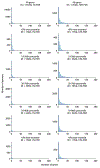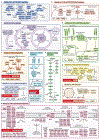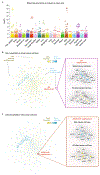A genome-wide atlas of co-essential modules assigns function to uncharacterized genes
- PMID: 33859415
- PMCID: PMC8763319
- DOI: 10.1038/s41588-021-00840-z
A genome-wide atlas of co-essential modules assigns function to uncharacterized genes
Abstract
A central question in the post-genomic era is how genes interact to form biological pathways. Measurements of gene dependency across hundreds of cell lines have been used to cluster genes into 'co-essential' pathways, but this approach has been limited by ubiquitous false positives. In the present study, we develop a statistical method that enables robust identification of gene co-essentiality and yields a genome-wide set of functional modules. This atlas recapitulates diverse pathways and protein complexes, and predicts the functions of 108 uncharacterized genes. Validating top predictions, we show that TMEM189 encodes plasmanylethanolamine desaturase, a key enzyme for plasmalogen synthesis. We also show that C15orf57 encodes a protein that binds the AP2 complex, localizes to clathrin-coated pits and enables efficient transferrin uptake. Finally, we provide an interactive webtool for the community to explore our results, which establish co-essentiality profiling as a powerful resource for biological pathway identification and discovery of new gene functions.
Conflict of interest statement
Competing interests
The authors declare no competing interests.
Figures
















References
Publication types
MeSH terms
Substances
Grants and funding
LinkOut - more resources
Full Text Sources
Other Literature Sources
Medical
Molecular Biology Databases
Research Materials

